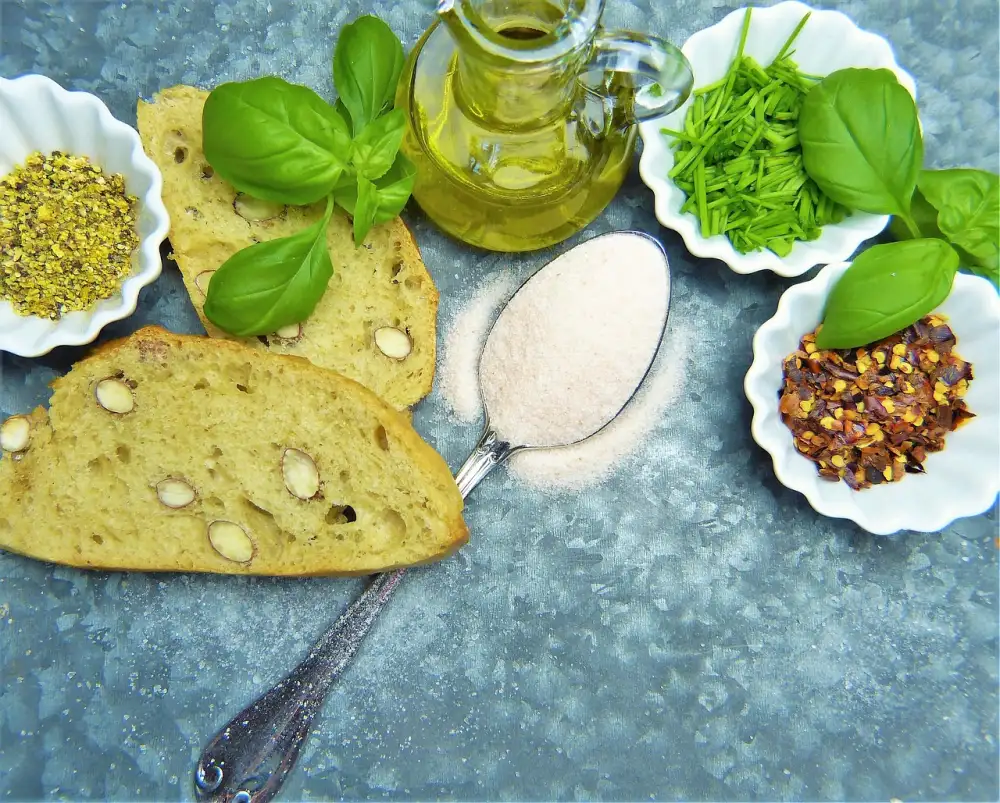Discover the Benefits of Gluten-Free Flour for a Healthy Lifestyle

In recent years, there has been a growing trend towards adopting a gluten-free lifestyle. This has led to an increased demand for gluten-free alternatives in the food industry, including the use of gluten-free flour. But what exactly is gluten-free flour?
Gluten-free flour is a type of flour that does not contain the protein called gluten. Gluten is found in grains such as wheat, barley, and rye, and it is responsible for giving dough its elasticity and structure. However, for individuals with celiac disease or gluten sensitivity, consuming gluten can lead to a range of health issues.
Gluten-free flour provides an excellent alternative for those who need to avoid gluten in their diet. It allows them to enjoy their favorite baked goods without compromising on taste or texture. Additionally, using gluten-free flour opens up a whole new world of culinary possibilities for individuals looking to experiment with different flavors and ingredients.
In the following sections, we will delve deeper into the effects of gluten on health, explore the benefits of using gluten-free flour, discuss the various types available in the market, provide tips for baking with it, share delicious recipes that incorporate this versatile ingredient, address common misconceptions about it, and ultimately encourage readers to embrace a gluten-free lifestyle for better health.
Understanding gluten and its effects on health
Understanding gluten and its effects on health is crucial for those considering a gluten-free lifestyle. Gluten is a protein found in wheat, barley, and rye. For individuals with celiac disease or gluten sensitivity, consuming gluten can lead to digestive issues, nutrient deficiencies, and other health problems. It can also trigger inflammation in the body and contribute to conditions like autoimmune diseases. By eliminating gluten from their diet and using gluten-free flour alternatives, individuals can improve their overall health and well-being.
Benefits of using gluten-free flour
Using gluten-free flour can have numerous benefits for your health and overall well-being. Firstly, it is a great option for individuals with gluten sensitivities or celiac disease, as it allows them to enjoy a wide range of delicious foods without experiencing any adverse reactions. Secondly, gluten-free flour is often higher in fiber and nutrients compared to traditional wheat flour, making it a healthier choice for everyone. It can help improve digestion, promote weight loss, and even lower the risk of certain chronic diseases such as heart disease and diabetes. Additionally, using gluten-free flour can lead to increased energy levels and improved mental clarity. So whether you have specific dietary restrictions or simply want to adopt a healthier lifestyle, incorporating gluten-free flour into your cooking and baking can be a game-changer.
Types of gluten-free flours available in the market
There are several types of gluten-free flours available in the market today, making it easier than ever to incorporate them into your baking and cooking. Some popular options include almond flour, coconut flour, rice flour, tapioca flour, and sorghum flour. Each of these flours has its own unique taste and texture, allowing you to experiment and find the perfect fit for your recipes. Whether you're looking for a nutty flavor or a light and fluffy texture, there is a gluten-free flour out there that will meet your needs.
Tips for baking with gluten-free flour
1. Mix different types of gluten-free flours: Combining different flours like rice flour, almond flour, and tapioca flour can help achieve a better texture and flavor in your baked goods.
2. Add binders: Since gluten-free flours lack the binding properties of gluten, it's important to add binders like xanthan gum or guar gum to improve the structure and prevent crumbling.
3. Increase moisture: Gluten-free flours tend to absorb more liquid, so increase the amount of liquid ingredients such as eggs, milk, or oil in your recipe to keep your baked goods moist.
4. Use smaller pans: Gluten-free batters are often denser than regular batters, so using smaller pans will allow for better heat distribution and prevent undercooking in the center.
5. Preheat your oven: Preheating is crucial when baking with gluten-free flour as it helps promote even baking and prevents a gummy texture.
6. Experiment with recipes: Don't be afraid to experiment with different recipes and techniques when using gluten-free flour. It may take some trial and error to find the perfect balance of ingredients for your desired results.
Remember, practice makes perfect when it comes to baking with gluten-free flour. With time and experimentation, you'll be able to create delicious treats that are both healthy and satisfying!
Exploring recipes using gluten-free flour
Exploring recipes using gluten-free flour opens up a world of delicious possibilities for those with dietary restrictions. From fluffy pancakes to moist chocolate cakes, gluten-free flour can be used in a variety of recipes without compromising taste or texture. Try making crispy fried chicken coated in a gluten-free flour blend or whip up a batch of chewy chocolate chip cookies using almond flour. The options are endless, and with the right recipes and techniques, you can enjoy your favorite dishes while maintaining a healthy gluten-free lifestyle.
Addressing common misconceptions about gluten-free flour
There are several misconceptions surrounding gluten-free flour that need to be addressed. One common misconception is that gluten-free flour lacks flavor and texture. However, with the wide variety of gluten-free flours available in the market today, this is no longer the case. Almond flour, for example, adds a rich nutty flavor to baked goods, while tapioca flour provides a light and airy texture.
Another misconception is that gluten-free flour is only suitable for those with celiac disease or gluten intolerance. While it is true that individuals with these conditions must strictly avoid gluten, anyone can benefit from incorporating gluten-free flour into their diet. It can help improve digestion, reduce inflammation, and promote overall gut health.
Some people also believe that baking with gluten-free flour is difficult and requires special skills. However, by following a few simple tips such as using xanthan gum as a binding agent and adjusting liquid ratios, baking with gluten-free flour can be just as easy and delicious as using regular flour.
Lastly, there is a misconception that gluten-free flours are expensive and hard to find. While some specialty flours may be pricier than traditional wheat flour, there are plenty of affordable options available in most grocery stores. Additionally, many online retailers offer a wide selection of gluten-free flours at competitive prices.
By addressing these common misconceptions about gluten-free flour, we hope to encourage more people to embrace this alternative for its numerous health benefits without any fear or hesitation.
In conclusion, embracing a gluten-free lifestyle can have numerous benefits for your health. By eliminating gluten from your diet and using gluten-free flour in your cooking and baking, you can improve digestion, reduce inflammation, and promote overall well-being. Gluten-free flour provides a great alternative for those with celiac disease or gluten sensitivity, allowing them to enjoy delicious meals without compromising their health. So why not give it a try? Start incorporating gluten-free flour into your favorite recipes and experience the positive impact it can have on your health and lifestyle.
Published: 17. 01. 2024
Category: Health



